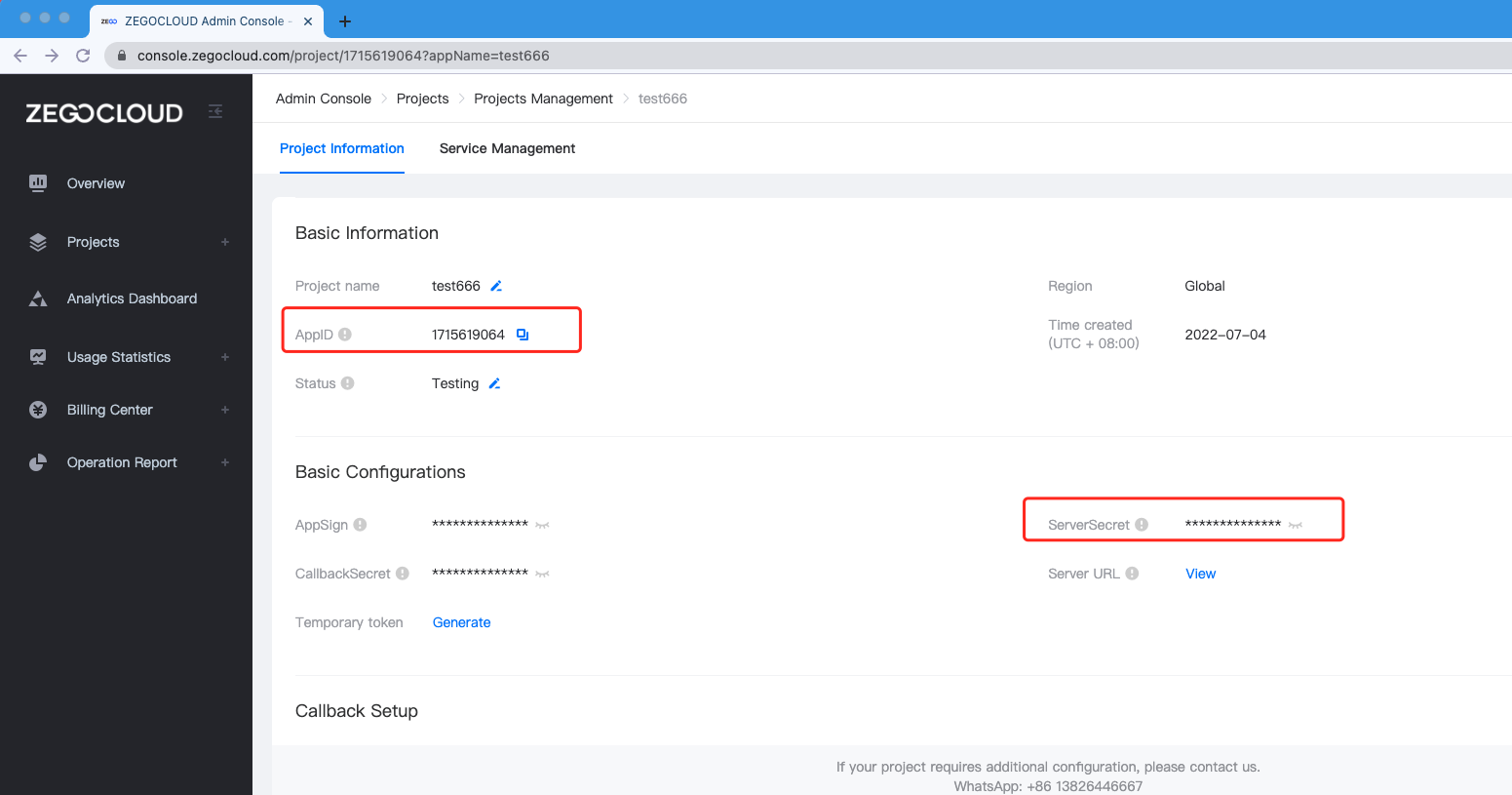- Documentation
- Live Streaming Kit
- Authentication and Kit Token
Using Kit Token for authentication
Introduction
Kit Token is a credential the ZEGOCLOUD UIKit uses for authentication: to validate the user’s permission. It will also determine:
- Which room the user will join
- The unique identifier of the user in the room (userID)
- Default username
ZEGOCLOUD UIKits provide the method to generate the Kit Token on the client app, while it's not safe enough for you to make your app go live officially. Here, we recommend you generate the Kit Token on your app server. Check this guide out:
Prerequisites
- Go to ZEGOCLOUD Admin Console to sign up.
- Create a project and get the AppID and ServerSecret.
)
Step 1 Generate a Token
After getting your AppID and ServerSecret, you can define the validation rules on your app server or client based on your business requirements.
- For business security, we recommend you generate Tokens on your app server; Otherwise, there is a risk of ServerSecret being stolen.
Generate a Token on your app server (recommended)
We provide an open-source Token generator plug-in on GitHub, which you can use to generate Tokens using different programming languages such as Go, C++, Java, Python, PHP,.NET, and Node.js.
| Language | ||||
|---|---|---|---|---|
Go |
Go 1.14.15 or later |
GenerateToken04 |
||
C++ |
C++ 11 or later |
GenerateToken04 |
||
Java |
Java 1.8 or later |
generateToken04 |
||
Python |
Python 3.6.8 or later |
generate_token04 |
||
PHP |
PHP 5.6 or later |
generateToken04 |
||
.NET |
.NET Framework 3.5 or later |
GenerateToken04 |
||
Node.js |
Node.js 8 or later |
generateToken04 |
Generate a Token (PHP as an example)
Here we recommend the Composer Autoload, that is the Composer's PSR-4 autoload.
1 Install the plug-in
a. Copy the downloaded package to the project's root directory. Let's take the /my_project/zego directory as an example, where /my_project/ is the root directory.
b. Include the psr-4 autoload config to the vim /my_project/composer.json file.
{
...
"autoload": {
"psr-4": {
"ZEGO\\": "zego/src/ZEGO"
}
}
...
}c. Run the composer dump-autoload, or composer dump-autoload -o(for production environment), or composer update command to generate an autoload file.
2. Generate the Token
- Use the following in the
/my_project/xxx.phpfile. - Leave the
payloadfield empty (because the Token is only used for a simple permission validation for service API).
require 'vendor/autoload.php';
use ZEGO\ZegoServerAssistant;
use ZEGO\ZegoErrorCodes;
$appId = 1111;
$userId = 'demo';
$secret = 'You serverSecret';
$payload = '';
$token = ZegoServerAssistant::generateToken04($appId,$userId,$secret,3600,$payload);
if( $token->code == ZegoErrorCodes::success ){
print_r(json_encode($token));
}Step 2 Generate a Kit Token
To generate the Kit Token:
- Fill in the
tokenfield in the following code with the Token you just generated in the previous steps - Fill in other fields and run the following code.
//... your own logic code
fetch(
`${youServerUrl}?userID=${userID}&expired_ts=86400`,
{
method: "GET",
}
)
.then((res) => res.json())
.then(({token})=>{
const kitToken = ZegoUIKitPrebuilt.generateKitTokenForProduction(
appID,
token,
roomID,
userID,
userName
);
const zp = ZegoUIKitPrebuilt.create(kitToken);
//... to joinRoom
})
